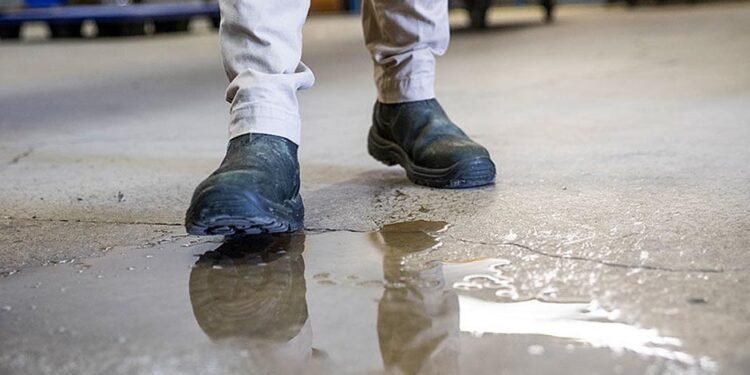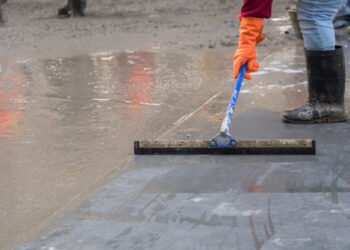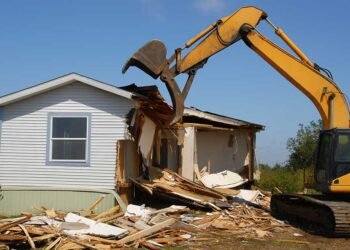Maintaining safe walking surfaces in a facility is essential for preventing slips, trips, and falls—some of the most common causes of workplace injuries. Whether it’s a manufacturing plant, an office, or a retail space, ensuring that walking surfaces are kept in a condition that minimises risks is not just a matter of regulatory compliance; it’s also a matter of safety and care for your employees, clients, and visitors.
From proper maintenance routines to using specific tools and technologies, there are various strategies for keeping your facility’s floors safe. A crucial element in this process is conducting regular floor slip testing, which helps assess the slipperiness of different surfaces and identifies areas that may require attention.
This article explores the importance of maintaining safe walking surfaces and provides practical advice for preventing accidents in your facility.
1. Understanding the Importance of Safe Walking Surfaces
Safe walking surfaces are essential for creating a secure and comfortable environment for everyone in your facility. Slips, trips, and falls can happen anywhere, but they are especially common in workplaces where surfaces are exposed to water, grease, or other contaminants. These incidents can lead to serious injuries, absences from work, and even legal claims against the business.
Beyond safety, a clean and well-maintained floor reflects professionalism and care for the people who enter your facility. It shows that you are committed to the well-being of your employees and customers, fostering a positive reputation and ensuring that your business operates smoothly.
2. Conducting Floor Slip Testing
One of the most effective ways to maintain safe walking surfaces is by regularly conducting floor slip testing. This type of testing measures the slipperiness of your floors and determines whether they meet the required safety standards.
Slip testing involves using specialised equipment to assess the coefficient of friction (COF) on various floor surfaces. A low COF indicates a higher risk of slipping, while a higher COF suggests better traction and grip. Slip tests can be conducted in different conditions, including wet, dry, or contaminated surfaces, to ensure that all potential hazards are addressed.
By performing regular floor slip testing, you can:
- Identify high-risk areas that need improvement
- Ensure that your facility complies with safety regulations
- Prevent accidents before they occur
- Demonstrate due diligence in creating a safe work environment
After testing, it’s essential to take immediate action to address any surfaces that don’t meet the required safety standards. This could involve surface treatments, floor replacements, or adjusting cleaning protocols.
3. Proper Floor Maintenance Routines
Routine maintenance is key to keeping walking surfaces safe in any facility. Without proper upkeep, floors can quickly become hazardous due to wear and tear, spills, or environmental factors. Here are some best practices for maintaining your facility’s floors:
- Regular Cleaning: Keeping floors clean is one of the simplest yet most effective ways to prevent slips and falls. Establish a regular cleaning schedule that includes sweeping, mopping, and removing debris. For high-traffic areas, cleaning may need to occur multiple times a day.
- Address Spills Immediately: Wet floors are a major cause of slips, so it’s important to clean up spills as soon as they happen. Ensure that all employees know the importance of addressing spills quickly and have access to cleaning supplies at all times.
- Use Appropriate Cleaning Products: Different floor surfaces require different cleaning products. For example, using a harsh chemical on a delicate floor could damage the surface and increase the risk of slips. Always use products that are suitable for the specific type of floor in your facility.
- Regular Inspections: Conduct regular inspections to check for any signs of wear and tear, such as cracks, loose tiles, or uneven surfaces. These issues should be addressed promptly to prevent accidents.
- Clear Obstructions: Keep walkways clear of obstacles that could cause trips. This includes removing clutter, ensuring cables are properly secured, and organising storage areas.
4. Floor Surface Treatments and Coatings
One way to improve the safety of your facility’s floors is by applying surface treatments or coatings that increase traction. These treatments are especially useful in areas that are prone to moisture or have a high risk of slipping, such as kitchens, bathrooms, or entryways.
Some common types of floor treatments include:
- Anti-Slip Coatings: These coatings are applied directly to the surface of the floor to increase grip and reduce slipperiness. Anti-slip coatings can be used on various types of flooring, including tiles, concrete, and vinyl.
- Grip Tapes: Grip tapes are adhesive strips that can be applied to stairs, ramps, or other high-risk areas to enhance traction. They are available in various textures and colours, making them a versatile option for different surfaces.
- Textured Flooring: Installing textured or patterned flooring can provide additional grip, especially in areas where water or other liquids are frequently present. Textured surfaces help prevent slips by offering better traction underfoot.
- Surface Roughening: In some cases, the existing floor surface can be roughened to improve traction. This process involves creating a textured finish on the surface, which helps reduce the risk of slipping.
5. Addressing Environmental Factors
Environmental factors can significantly affect the safety of your facility’s walking surfaces. Moisture, temperature changes, and weather conditions all play a role in the condition of floors, so it’s important to take these factors into account when developing your maintenance strategy.
- Moisture Management: Water is one of the most common causes of slips. Ensure that any areas prone to moisture, such as entryways or kitchens, are properly equipped with mats or drainage systems to prevent water from pooling on the floor.
- Temperature Changes: Cold temperatures can cause certain materials to become slippery, especially in outdoor areas or near entrances. During colder months, ensure that de-icing products are applied to outdoor walkways and that indoor areas remain dry.
- Lighting: Poor lighting can make it difficult for people to see potential hazards, increasing the risk of trips and falls. Make sure that all areas of your facility are well-lit, especially walkways, staircases, and entryways.
6. Educating Employees on Safety Practices
Creating a culture of safety in your facility starts with educating employees on the importance of maintaining safe walking surfaces. By involving your staff in safety practices, you can help prevent accidents and ensure that everyone is aware of potential hazards.
Here are some ways to promote safety awareness among employees:
- Training: Provide regular training sessions on proper floor maintenance, spill response, and how to report hazards. Ensure that all employees understand the importance of preventing slips, trips, and falls.
- Signage: Use clear and visible signage to warn employees and visitors of potential hazards, such as wet floors, uneven surfaces, or areas under maintenance.
- Encourage Reporting: Create a system for employees to report any floor hazards they notice, such as damaged surfaces or spills. Prompt reporting allows issues to be addressed before they lead to accidents.
7. Implementing Safety Mats and Anti-Fatigue Mats
Safety mats are an effective way to reduce the risk of slipping, especially in high-traffic areas or locations where water or grease is common. Anti-fatigue mats are also helpful in providing comfort and stability for employees who stand for long periods, such as those working in kitchens or at assembly lines.
- Entrance Mats: Installing mats at the entrance of your facility can help prevent water, dirt, and debris from being tracked inside, reducing the risk of slips on wet floors.
- Anti-Fatigue Mats: These mats provide cushioning and support for employees who stand for long hours, reducing the risk of slipping due to fatigue and providing additional traction.
Maintaining safe walking surfaces in your facility is an ongoing process that requires attention to detail and a proactive approach. By conducting regular floor slip testing, implementing proper maintenance routines, and addressing environmental factors, you can significantly reduce the risk of slips, trips, and falls.
A safe facility not only protects your employees and visitors from injury but also demonstrates your commitment to creating a secure and professional environment. Through a combination of preventive measures, employee education, and the right tools, you can ensure that your facility remains a safe place for everyone who walks through its doors.












